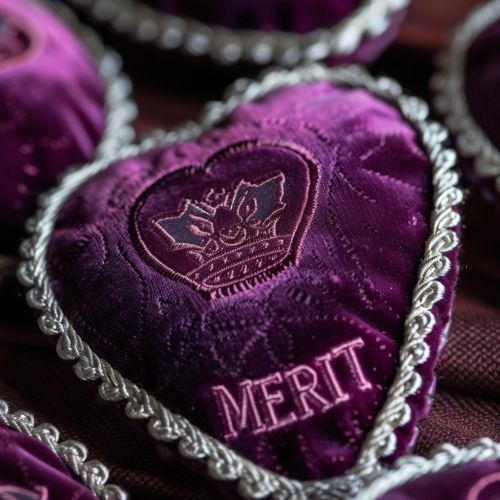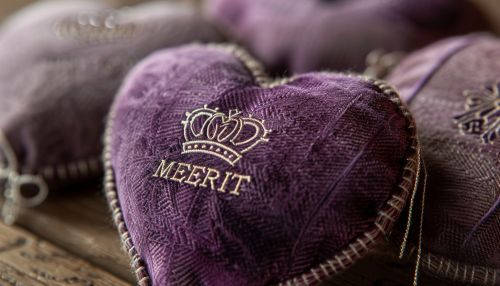Badge of Military Merit
History
The Badge of Military Merit was one of the first military decorations established in the United States. It was created by General George Washington during the American Revolutionary War in 1782. The badge was designed to recognize "any singularly meritorious action" and was intended to honor enlisted soldiers. The decoration was largely forgotten after the Revolutionary War until it was revived in the 20th century as the Purple Heart.


Design
The Badge of Military Merit was a heart-shaped badge made of purple cloth. It was edged with a narrow binding of silver thread. The badge was embroidered with the word "MERIT" in silver. The design was simple and unadorned, reflecting the democratic ideals of the new American republic.
Eligibility and Awarding
The Badge of Military Merit was intended to be awarded to enlisted soldiers. Officers were not eligible to receive the badge. This was a significant departure from European military traditions, where decorations were often reserved for officers. The badge was awarded for "any singularly meritorious action", a broad criterion that allowed for recognition of a wide range of deeds.
Legacy
The Badge of Military Merit is considered a precursor to the Purple Heart. The Purple Heart, established by General Douglas MacArthur in 1932, is awarded to members of the U.S. military who are wounded or killed in action. The design of the Purple Heart is similar to the Badge of Military Merit, featuring a heart-shaped medal made of purple cloth.
